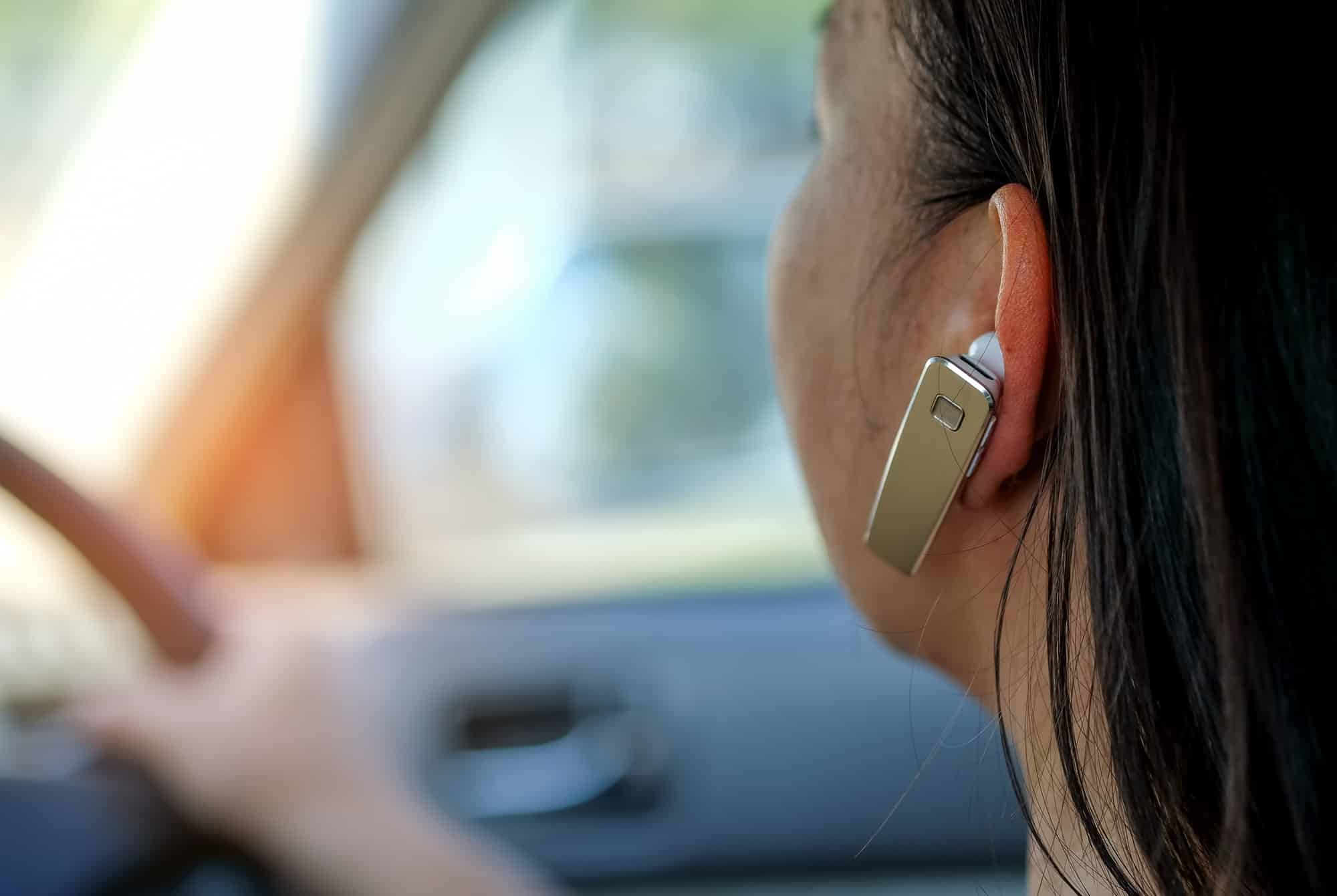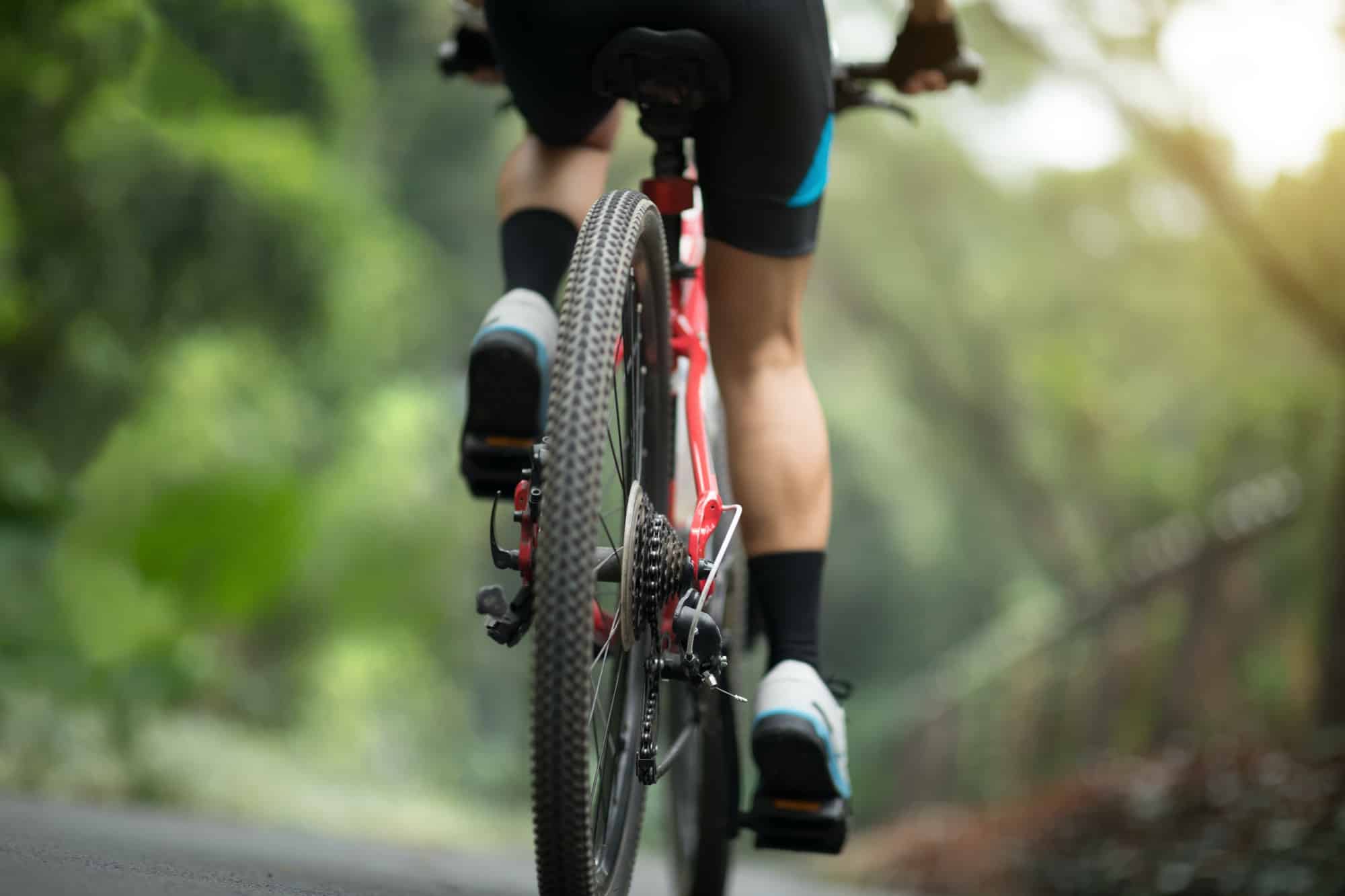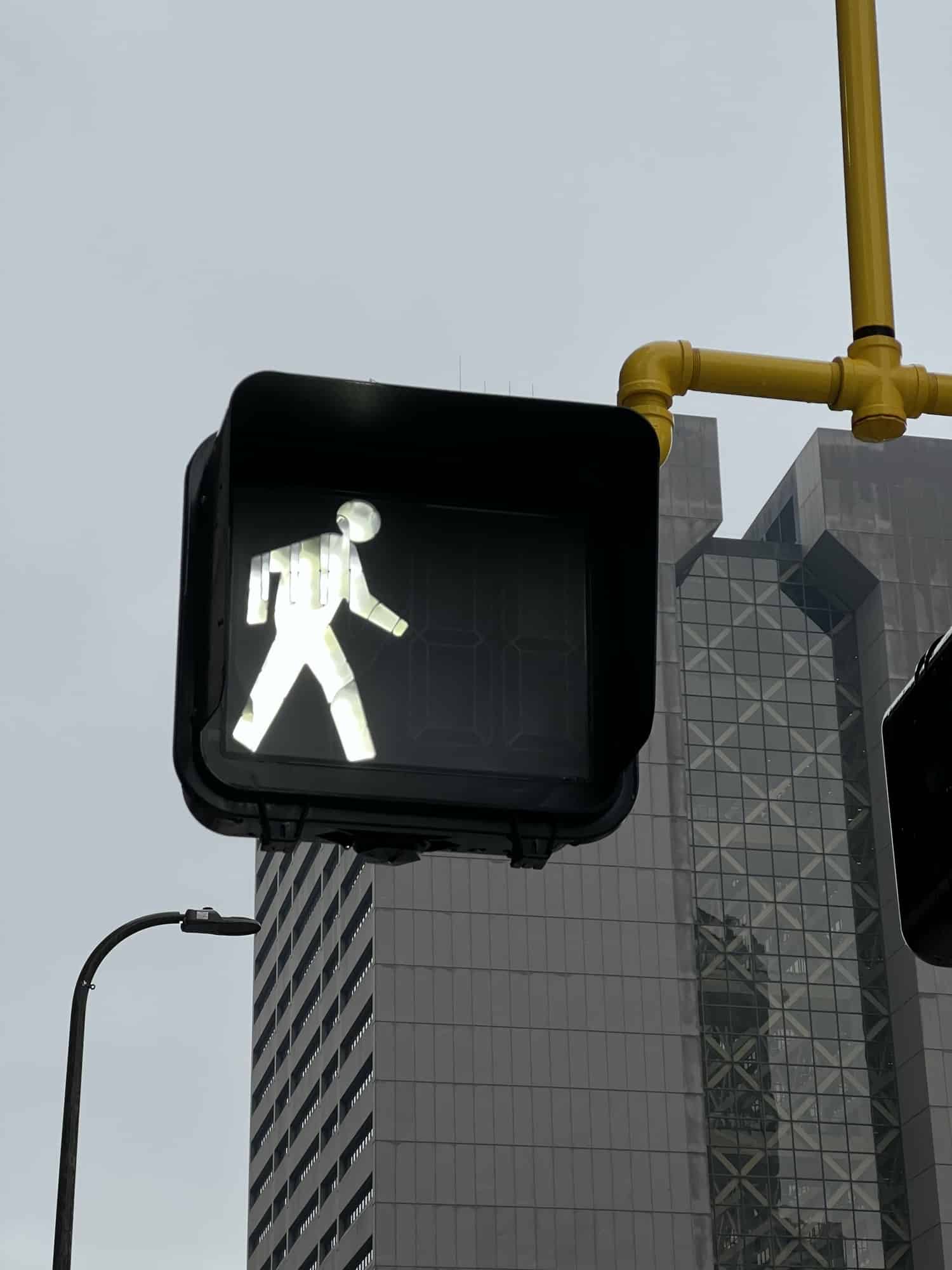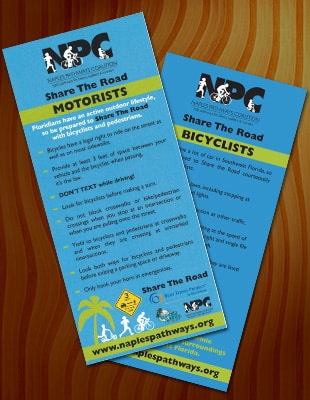Sharing The Road Safely
Safety Tips
It’s time to change the statistic
Florida is #1 in the nation for bicycle and pedestrian crashes and fatalities. Within the state, Collier County is among the top 15 most dangerous places to walk or ride a bike.
MOTORISTS

Floridians have an active outdoor lifestyle, so be prepared to Share the Road with bicyclists and pedestrians.
- Bicycles have a legal right to ride on the street as well as on most sidewalks.
Provide at least three feet of space between your vehicle and the bicyclists when passing. - DON’T TEXT while driving! It is now a primary offense which means you can be pulled over, ticketed, and receive points against you for breaking this law.
- Look for bicyclists and pedestrians before making a turn.
- Do not block crosswalks or bike/pedestrian crossings when you stop at an intersection or when you are pulling onto the street.
- Yield to bicyclists and pedestrians at crosswalks and when they are crossing at unmarked intersections.
- Look both ways for bicyclists and pedestrians before exiting a parking space or driveway.
- Only honk your horn in emergencies.
BICYCLISTS

There are a lot of cars in Southwest Florida, so be prepared to Share the road courteously with motorists.
- Obey all traffic laws, including stopping at STOP signs or red lights.
- Ride in the same direction as other traffic – on the road and on the sidewalk.
- Stay alert – don’t wear headphones and stay off of electronic devices.
- BE PREDICTABLE! Don’t swerve in and out of traffic, and use hand signals.
- Do not ride more than two abreast. As a courtesy, allow motorists to pass when they are lined up behind you.
- Be visible – wear bright colors and make sure your bike has front and rear lights.
- Wear a helmet.
- If you are riding on the sidewalk, watch for cars in driveways and parking lot entries/exits, and be prepared to stop. This is a very common collision point.
PEDESTRIANS

It’s wonderful to be outside in Florida, and when you are on the street or sidewalk remember that you have to obey the same “rules of the road” as motorists and bicyclists.
- BE VISIBLE. Carry a light, wear blinking lights, and wear light colored clothes at night, walk in well-lit areas, and make sure motorists/bicyclists see you before you enter the roadway. Stay off electronic devices, especially when crossing.
- Obey traffic signals and signs. Follow the traffic laws.
- Only cross at crosswalks or intersections. Don’t jaywalk.
- Do not assume vehicles will give you the right of way.
- Walk on the sidewalk whenever possible. When sidewalks are not available and you must use the road, walk against traffic.
- If you are walking in a bike lane, walk against traffic. If a cyclist is approaching, move to the grass or side of the road and allow them to pass. Never force a cyclist into traffic by blocking the bike lane.
Tips for Being Visible When You Bike, Walk, or Run
We all know we should stay aware of the traffic laws where we are riding, walking, or running, and always stay alert. The most important tip for your safety is to make sure you are visible. Visibility is key to avoiding a collision. You should do everything you can to stay visible and stand out in traffic. Here are a few tips for increasing your visibility while riding your bicycle:
Move
If you are walking or running in a bike lane and cyclists are approaching, move into the grass or side of the road to let them pass. Never force a cyclist into traffic by blocking the bike lane. This is very dangerous for everyone involved.
Adhere to traffic laws
Bicycles on the road are considered vehicles and must stop at stop signs and red lights. Be sure drivers at intersections by making eye contact with them, especially if you plan to ride across the intersection in front of them. Without eye contact, assume they do not see you.
Signal your intentions
When you are changing lanes, merging, or turning on your bike, always signal your intentions. Use your left hand to point when going left and use your right hand to point when you are going right. Ride predictably so drivers will understand where you want to go. When you cut in and out of traffic, move lanes quickly, or ride between cars, you are setting yourself up for a crash.
Always assume that drivers don’t see you
To make sure you are as safe as possible, always ride with the assumption that drivers don’t notice you. Stay alert and be prepared to ride defensively.
Wear fluorescent colors
Choose a neon yellow, bright orange, lime green, or hot pink shirt, jersey, jacket, or vest. Wear brightly colored clothing and gear, so you will stand out and won’t blend in with the landscape. If you choose white, brown, blue, green, or black, you are much more likely to blend in and not be noticed.
Lights
Carry a flashlight, wear a blinking light, or be sure your bike has a functioning headlight and taillight, and both are visible for several hundred feet. (Bike lights are required by law from dusk to dawn.) Use your front and rear lights in blinking mode during the day to increase visibility, and only your taillight should be blinking at night with the headlight a constant beam. Make sure your bike has plenty of reflectors too – on the fenders, spokes, pedals, and body.
Choice of Lane
Ride in a prominent spot in the lane. Don’t ride next to the curb. That sets you up for a sideswipe by a car that gets too close. When you ride closer to the center of the lane, cars will need to change lanes to pass as they would any other vehicle, and that is additional protection for you.
Don’t get too close to parked cars
When passing by parked cars, listen for locks opening, watch for doors opening, and watch for traffic. You could get “doored” by someone entering or exiting a vehicle who doesn’t see you.
Blind Spots
Don’t stop on the right side of vehicles because you will be in the blind spot. Even if you are riding in a bike lane, don’t pull up in that lane to the right of a car at an intersection. Always stop behind the vehicle. Otherwise, you could be run over by a vehicle that turns as they may not see you.
Earbuds and Headphones
One last important reminder: never ride with earbuds or headphones. It is illegal, but it is also very unsafe. It is always smarter to avoid using e can hear traffic and people around you.
The only one looking out for you is you. You need all of your senses to do that effectively.

SAFETY TIP CARD
NPC Safety Tip Cards are printed with information for motorists on one side and bicyclists on the other.
They are currently distributed throughout Collier County through the Department of Motor Vehicles and local businesses, and in Bonita Springs in Lee County. Over 100,000 cards have been distributed in the last two years.
Your business or organization logo can be imprinted on the card for a minimal fee.
For more information about obtaining Safety Tip Cards, please contact Naples Pathways Coalition.
